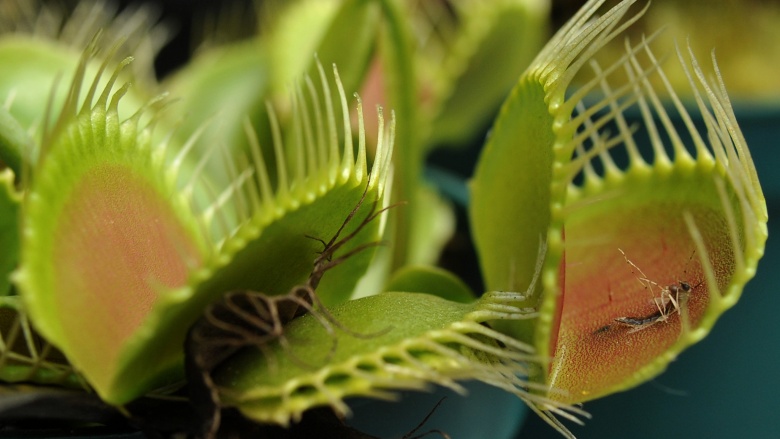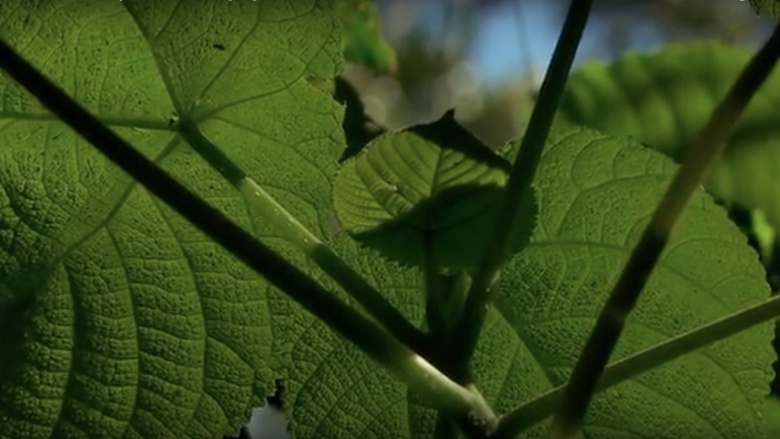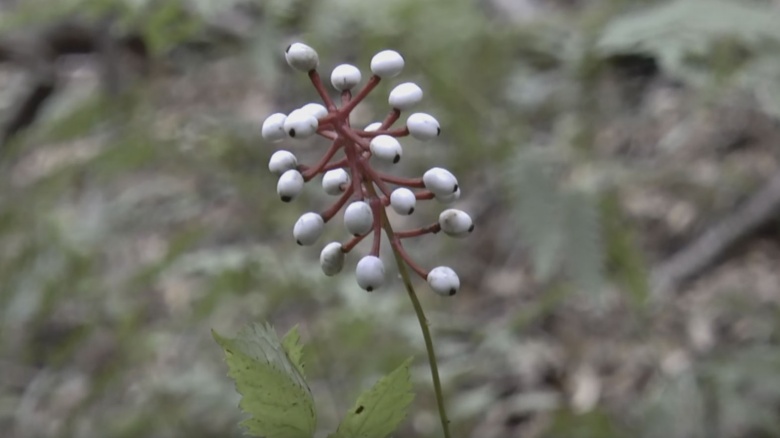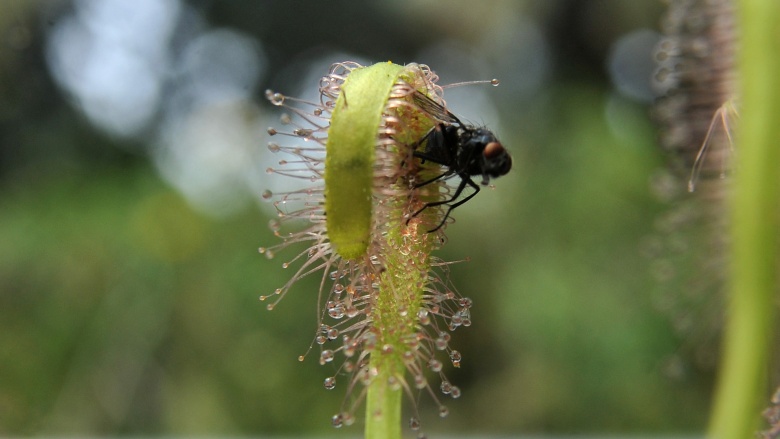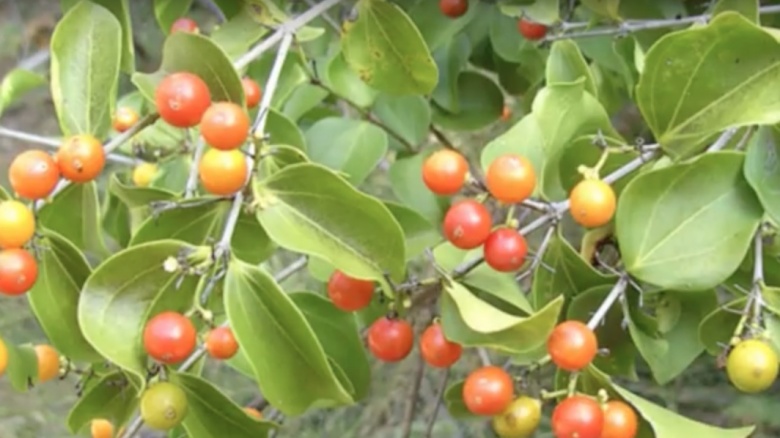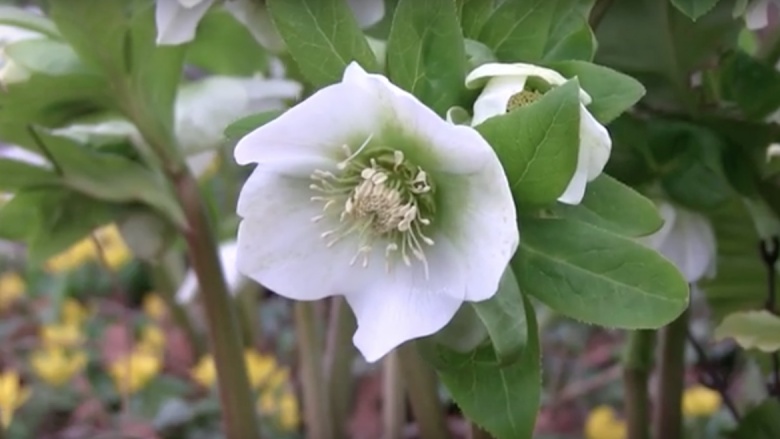Terrifying Plants That Want To Kill You
When people think about plants, they often think of the common trees, flowers, and bushes they see every day. Most don't realize the world has tons of crazy foliage growing all over the place, some of which have the ability to kill any living thing that gets too close. Who needs Triffids when we already have some otherworldly plants here on Earth?
Venus flytrap
When exploring the world of creepy plants, people usually first think of the Venus flytrap, and with good reason. Native to North and South Carolina, these bizarre-looking carnivores like to sit and wait for their prey to land or crawl onto their leaves, which are actually toothy, gaping maws. Once the victim is in place, the flytraps clamp their mouths down and begin digesting their feast with enzymes strong enough to dissolve human flesh (in tiny amounts), according to carnivorous-plant enthusiast Barry Rice. Unlike the Sarlacc, flytraps don't take millennia to digest their meals, only about ten days, making it slow and painful nonetheless. Fortunately, Dionaea muscipula don't grow as large as the one in Little Shop of Horrors, unless science finally steps up on this issue. Still, its diminutive size is probably why this plant doesn't have as big an appetite as this next customer...
Nepenthes attenboroughii
Discovered in 2000, the Nepenthes attenboroughii, or Attenborough's pitcher plant, is a bit more ravenous than other carnivorous plants. While most meat-eating plants resign themselves to insects and arachnids, the pitcher plant craves mice and shrews, according to the BBC. Being a pitcher, the plant collects water during rains. When rats and other vermin, and even birds, peek their heads in to take a sip, the Philippine plants slap down their lids, trapping their unlucky yet juicy quarries in their football-sized traps and begin dissolving them. New York City's officials ought to figure out a way to cultivate some of these to take care of that rat problem they're always talking about.
Dendrocnide excelsa
Dendrocnide excelsa, or the giant stinging bush, looks like any other plant, and that's where its otherworldliness comes from. It's learned how to camouflage itself so it doesn't stand out. Therein lies its treachery. This innocent-looking Australian plant actually possesses an incredibly painful, poisonous sting, which has been known to kill dogs and horses. (And yes, it would be Australia of all places that has a plant that stings.) People who have had contact with the sting, such as ecologist Marina Hurley, describe it as a combination of acid burn and electrocution. In fact, the sting is so agonizing that once an Australian police officer shot himself in order to escape the pain, according to Australian Graphic. Another man claimed to suffer from the plant for two years after his prickling. Intriguing note: the British Army supposedly used the tree to develop chemical weapons at one point in the '60s. They found the right plant.
Doll's eye (Actaea pachypoda)
The actaea pachypoda, or doll's-eyes, looks like a demon out of some Japanese horror movie, despite the fact it's an all-American plant. While a white flower bearing a single black berry looks and sounds innocent enough, having ten or more of them staring at you from their, on average, two-foot-tall blood-red stalk is enough to give anyone the heebie jeebies. When you add the fact that the plant is poisonous is enough to kill a human, it magnifies the plant's demonic nature. Should anyone want to ingest the berries for whatever reason, he or she can expect a sedated heartbeat, along with hallucinations, dizziness, and possible death, meaning it could very well drag a person to the underworld. However, the poisons have no affect on birds, which is how its seeds are spread, and that means the birds are in cahoots with this plant. Any hiker who comes across the doll's eye should stay far, far away.
Drosera capensis
The drosera capensis, or Cape sundew, is what you get when you cross an octopus with a plant and put its stomach on the outside. Another carnivorous plant, this South African perennial waits until unsuspecting arthropods land on it, which is the signal to chow down. When, say, a butterfly lands on a leaf that is actually covered in sticky tentacles, they wrap around the victim and then begin to digest it right out in the open, in full view of the victim's family, because this plant likes to have an audience, apparently. Its appetite is so voracious that it cannot be contained to one country. In 2001, the Cape sundew went on a food run to New Zealand, where it's considered an invasive species, according to the New Zealand Plant Conservation Network. It truly is an alien plant.
Strychnos nux-vomica (Strychnine tree)
It should come as no surprise that the strychnine tree is poisonous. However, most may be surprised to learn just how toxic the strychnos nux-vomica is. It actually contains two poisons. The first, of course, is strychnine, which is used as a pesticide for taking care of rodents, birds, and nosy neighbors. This poison can be found in the fruit, which is easy enough to avoid. Just control yourself and don't eat it. The other poison, brucine, can be a bit more tricky. Found in the bark, most people succumb by consuming ceremonial drinks made from this tree, which is easily confused with the Alstonia scholaris, which is the tree that should be used, as it's safe to consume. This happens in India a bit, according to the National Center for Biotechnology Information. Those who quench their thirst with brucine can expect to experience convulsions and renal failure, among a slew of other exciting symptoms. Strangely enough, the plant is used in alternative medicine to treat heart disease and cancer. Yet, there's no science to support these uses.
Christmas Rose
According to legend, the Helleborus niger—or Christmas rose—came into being a very long time ago, after a little girl cried because she had no gift to give during the Nativity. But in actuality, this deceptively beautiful plant was beamed down by homicidal aliens because, despite the festive name, the Christmas Rose is anything but a gift. In fact, its whole name is a lie. It has nothing to do with Christmas, and it's not a rose. It's actually a buttercup of death. Should anyone ingest it, like on a dare, that person can look forward to burning sensations in the throat, mouth and eyes, as well as gastroenteritis and hematemesis. For those who don't know, hematemesis is vomiting up blood. Hey, blood is red, and red is a Christmas color, so maybe that, along with the green of the stem, is where the name "Christmas rose" comes from. Regardless, this is probably not a great stocking stuffer. Stick with chocolate oranges or whatever.

